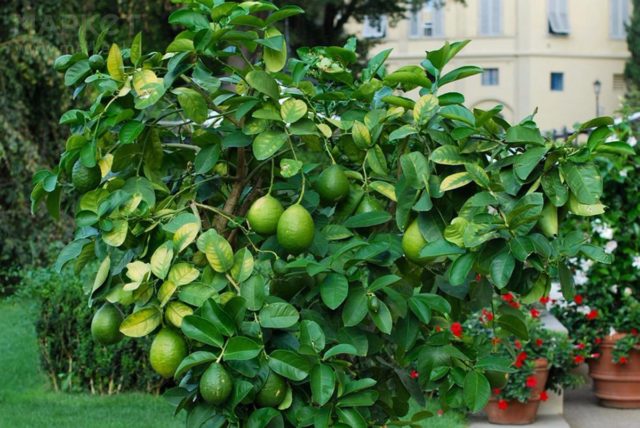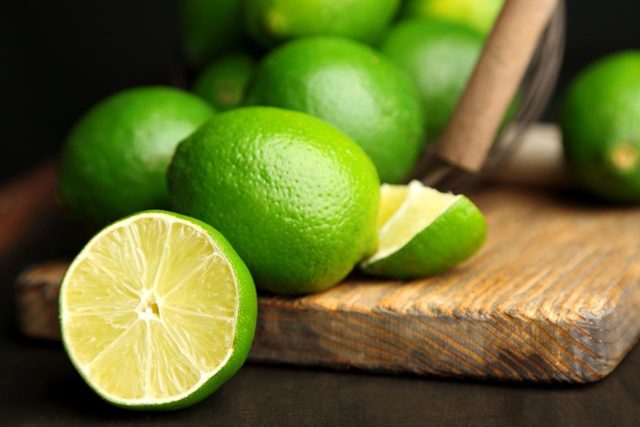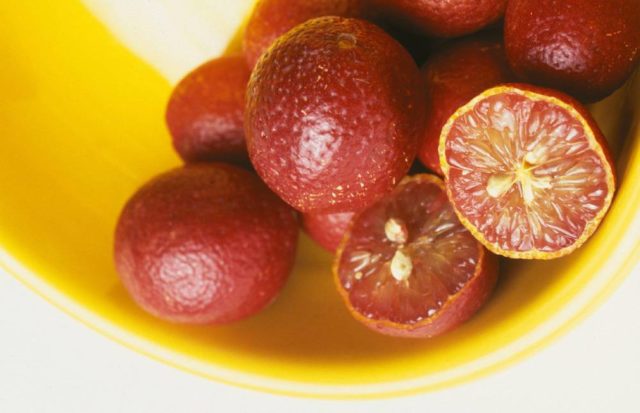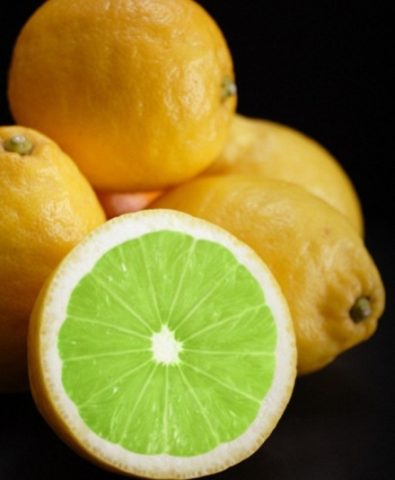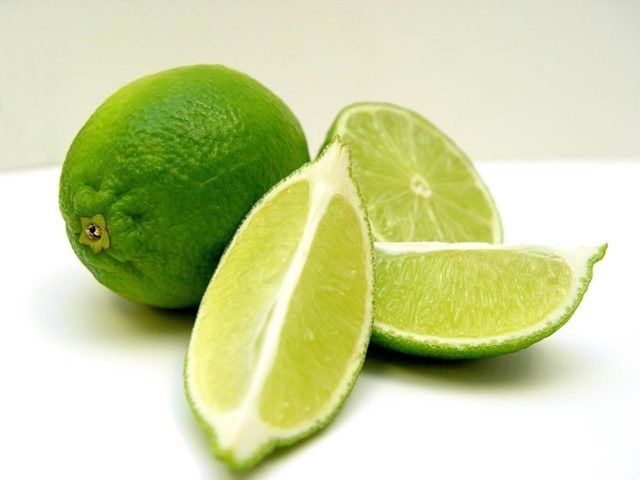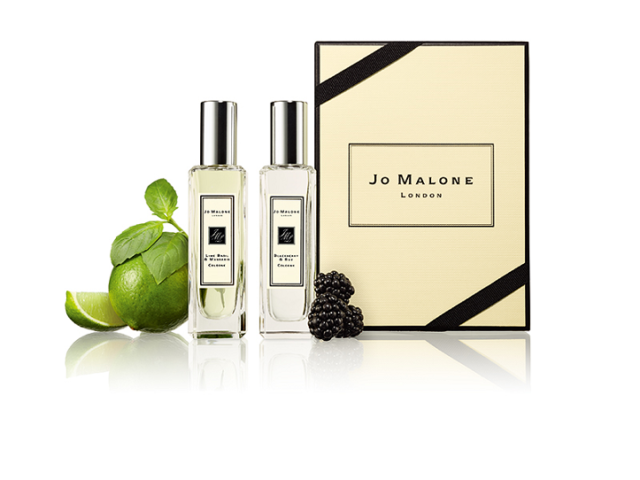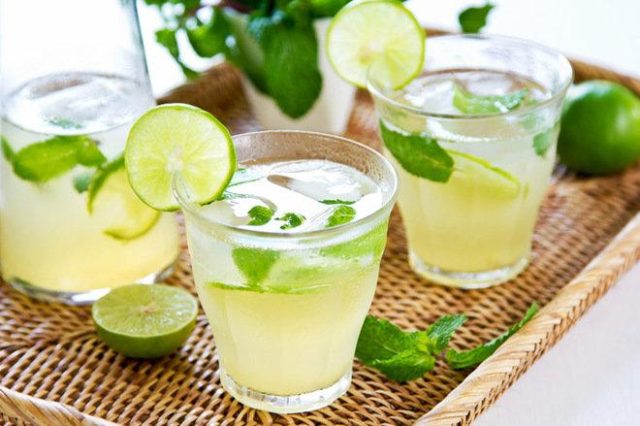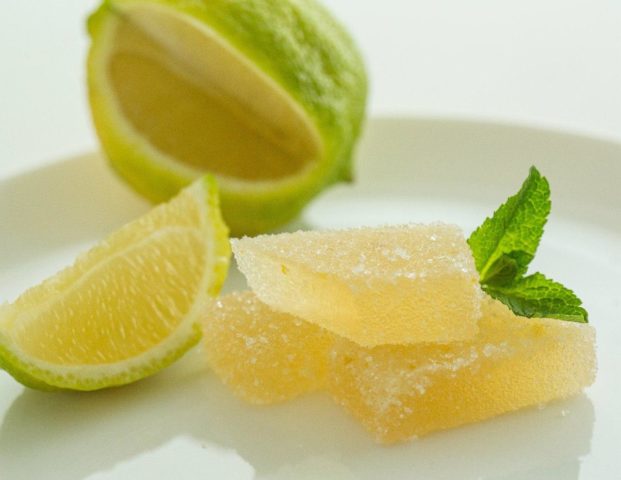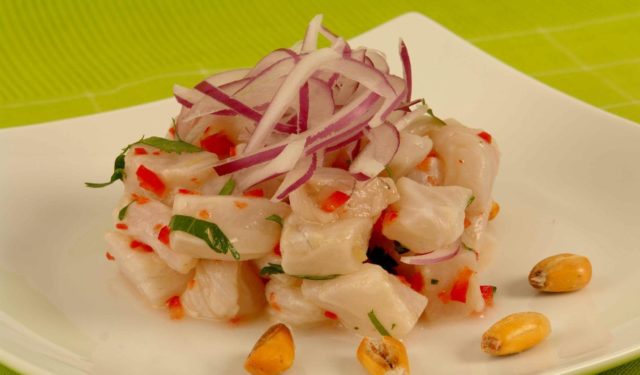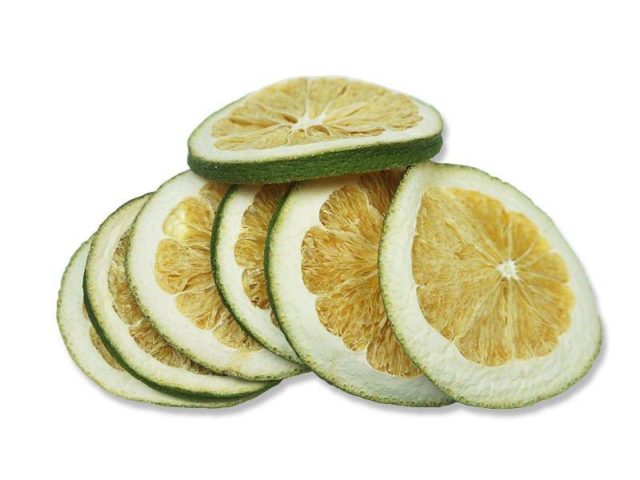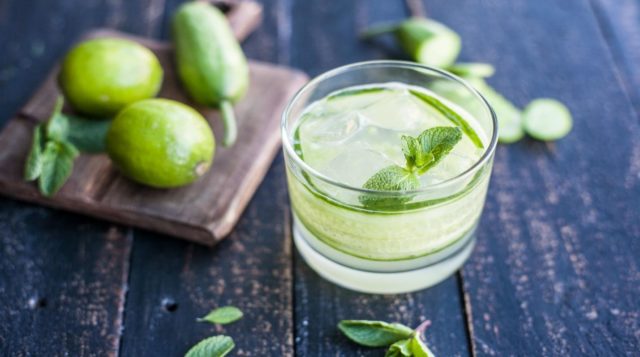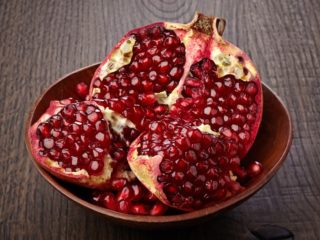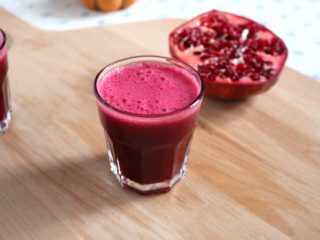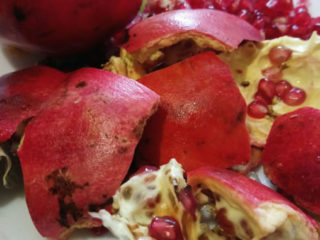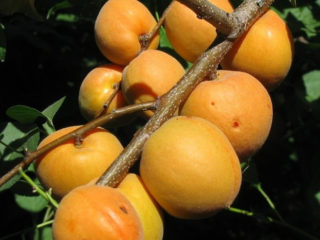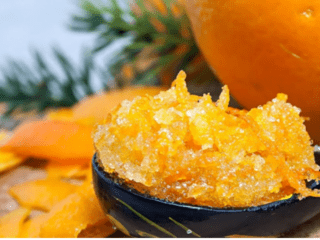Content
- 1 Is lime a fruit or vegetable?
- 2 What does a lime look like?
- 3 What does lime taste like?
- 4 Chemical composition of lime
- 5 What are the benefits of lime for the body?
- 6 Contraindications to the use of lime
- 7 How to choose a lime
- 8 How to eat lime fruit
- 9 Can you eat lime peel?
- 10 What can you eat lime with?
- 11 What can you do with lime?
- 12 Lime calories
- 13 How to store lime at home
- 14 Conclusion
- 15 Reviews of lime for weight loss
Citrus fruits are in demand all over the world. They are valued for their taste and beneficial properties. Among the variety of these crops, the most popular are lemons and limes. The beneficial properties of lime fruit depend on its composition and degree of ripeness.
Is lime a fruit or vegetable?
Lime belongs to the Rutaceae family; genetically this fruit is similar to lemon, but has distinctive features in several respects.
Limes are used for desserts, baked goods, and marinating meat and poultry. Due to its use as an additive to main courses, citrus is sometimes called a vegetable. This opinion is supported by the use of lime to prepare guacomole, a classic Mexican sauce for main courses. The fruit goes well with seafood and is one of the essential elements of Asian soup.
Despite these signs, lime is classified as a fruit. A fruit is any fruit of a tree that is juicy.This is not a botanical term, but a concept that is used in an economic sense. Limes are citrus fruits from fruit trees.
Confusion about the designation of lime may be due to the etymology of the word. Until the 19th century All fruits were called vegetables; the word “fruit” simply did not exist. The situation has changed over time, when information became available and the level of education increased.
What does a lime look like?
Lime grows on a short lime tree, the branches of which form a dense crown of dark green leaves. The leaves are covered with a light waxy coating; spines form in their axils, which often interfere with manual picking of fruits.
Lime trees enjoy tropical climates with moist soil and damp air. A large peninsula in East Asia is considered their homeland. The most extensive lime plantations are located in India, Sri Lanka, Brazil, and Mexico.
Citrus is one of the remontant crops, that is, it has the ability to bloom and bear fruit repeatedly. Flowers are formed on the axils of the leaf blades; one inflorescence can form from 1 to 7 single flowers of white and pale cream color. The peculiarity of the culture lies in the ability to bear fruit throughout the year. However, the main harvest occurs when the rainy season begins to end.
Description of fruits:
- size: from 3 to 6.5 cm;
- weight: from 50 to 200 g;
- shape: oval, ovoid;
- color: the peel has a rich light green tint;
- pulp: a shade lighter than the color of the peel, the pulp of the fruit is juicy, contains oblong seeds.
What does lime taste like?
The taste of the fruit distinguishes it from its closest relative, the lemon.Lime has the usual citrus sourness, but there is a bitterness that makes it especially compatible with seafood.
There are hybrid varieties of lime that are bred through selective breeding.
Blood lime, which grows in Australia, has a sweet and sour flavor and is used mainly for making cocktail drinks.
Lemonaime is a light yellow hybrid with a low ascorbic acid content. Sweet limes are fruits that have been specially bred to be low in vitamin C but high in sucrose.
Chemical composition of lime
We can talk about the health benefits and harms of lime after analyzing its composition. The small fruit is rich in useful substances, which can be divided into main groups.
Vitamins | Microelements | Macronutrients | Amino acids |
Vitamin A | Iron | Potassium | Lysine |
Beta carotene | Manganese | Calcium | Methionine |
Ascorbic acid | Selenium | Magnesium | Tryptophan |
Vitamin K | Zinc | Sodium |
|
Folic acid | Copper | Phosphorus |
|
In addition, citrus pulp contains saturated palmitic and stearic acids, as well as fatty acids linoleic and oleic. The pulp fibers contain fiber, water and sucrose.
What are the benefits of lime for the body?
The main beneficial properties of the fruit are determined by its composition:
- Ascorbic acid and potassium increase the elasticity of blood vessels, which has a positive effect on the activity of the heart muscle and helps normalize blood flow.
- Macroelements are responsible for the additional production of collagen, which is necessary for the body as a blocker of the aging process.
- The vitamin-mineral complex stabilizes the activity of the defenses, increases immunity, and helps cope with inflammation and infections.
- The content of fiber, vitamins and essential oils has a beneficial effect on digestive processes, increases the ability to absorb nutrients and remove harmful substances.
- Substances that function as antioxidants are involved in the processes of normalizing vision.
- Glycoside and flavonoids are considered prophylactic agents in the fight against predisposition to cancer.
- Essential oils have a calming effect: by gently affecting the nervous system, they relieve symptoms of irritability.
- Microelements contained in the pulp help improve overall well-being.
The benefits of lime for the body are directly related to the method of its preparation. The fruit is suitable as an additive to drinks, meals, and daily juice intake. It is prescribed for the treatment of scurvy, a disease associated with iron deficiency.
In addition, the fruit is used as an external remedy. Squeezed fresh lime juice is used as the basis for compresses, lotions, or used to prepare cosmetics with a healing effect.
Benefits of lime for women
The effects on a woman’s body are based on some features of the fruit:
- ascorbic acid and potassium have an effective effect on the condition of veins, so women who include lime in their diet do not suffer from varicose veins;
- the components of the composition are also able to improve hormonal levels, which is especially noticeable during the period of premenstrual syndrome, as well as after the onset of menopause;
- B vitamins actively influence the strengthening of nails, the condition of facial skin and hair growth;
- amino acids support metabolic processes, which contributes to faster burning of excess calories: this mechanism is especially important for women who are concerned about maintaining slimness;
- flavonoids and citrus essential oils help stimulate the production of collagen, which moisturizes the skin, making it radiant and tightened;
- As a component of external products, lime is valued by women for its properties of whitening the skin and eliminating age spots.
Lime aroma is often the basis of aromatic products. Based on it, perfumes with refreshing notes are created, as well as aroma candles and massage oils. Essential oils have a beneficial effect on overall well-being.
Benefits of lime for men
Citrus fruit is useful for men during periods of emotional overstrain and work stress. Essential oils promote relaxation. In addition, the components of the composition normalize the full functioning of the reproductive system. This effect becomes possible with regular consumption of lime water, juice diluted with liquid, or pulp without heat treatment.
Beneficial properties of lime for children
Lime as a fruit is often attractive to young children, but its sour taste is not always pleasant. It begins to be introduced into children's diets in the absence of pediatric indications from 3 to 4 years. In this case, the juice is diluted with water, the pulp is sprinkled with sugar. This is a natural source of vitamin C for children's bodies. In addition, it contains the daily requirement of vitamin D, which is important for children throughout the period of bone and tooth growth.
Contraindications to the use of lime
The beneficial properties of lime, its demand as a fruit or an additional ingredient in modern dishes, can result in health problems if consumed despite restrictions.
Lime will not benefit:
- for those who suffer from stomach diseases associated with high acidity, amino acids and ascorbic acid in the fruit act as an irritant on the walls of the stomach, which, in turn, leads to excessive secretion of gastric juice;
- persons prone to allergic reactions to citrus fruits: this fruit can cause one of the most complex and common forms of allergies;
- people with hypersensitive gums or damaged tooth enamel.
How to choose a lime
When eating a fruit, the degree of ripeness, as well as the condition of the peel and pulp, is important. In countries with a temperate or temperate continental climate, limes can be found on the shelves of supermarkets or fruit and vegetable stores.
We have to select suitable specimens from what exporters present. During transportation, limes usually ripen along the way and reach the consumer moderately ripe, but due to violation of transportation or storage rules, the fruit can easily spoil. To get the most benefit from limes, you need to choose the right fruit. This can be determined by external signs:
- the peel should be smooth, without cracks or punctures;
- there should be no dry, white or black spots on the surface of the lime;
- When pressed lightly, the fruit should be elastic, but not soft;
- A ripe lime gives off a subtle citrus aroma, but an unripe fruit has no smell at all.
If the fruit was purchased slightly unripe, you can put it on a shelf and wait until it is fully ripe. To speed up the process, you can put yellow bananas next to the lime. They emit ethylene, which helps soften the fruit tissue and more actively ripen its fibers.
How to eat lime fruit
To get the maximum benefit from taking lime, follow some rules when preparing it:
- lime is not subjected to heat treatment, which can destroy the structure and deprive the fruit of its beneficial properties;
- To season a dish or enhance its flavors, lime is added last;
- Freshly squeezed juice is not drunk concentrated; it is diluted with water in different proportions.
The fruit is not recommended to be consumed on an empty stomach, although this rule does not apply to lime water, which has beneficial properties.
Before going to bed, you should not get carried away with tea with lime, so as not to provoke a diuretic effect, although a chamomile drink with a slice of lime will have a calming effect.
The main rule when consuming lime is to control compliance with the permissible norm of the fruit.
Can you eat lime peel?
Lime peel is thinner than lemon peel. It contains useful substances, and, despite the fact that the taste may be bitter, it can be eaten. The peel is usually consumed together with the pulp or the zest is used.
Lime zest can be stored in the refrigerator for several months and used as needed.
What can you eat lime with?
Lime is a versatile citrus fruit that is added to drinks, desserts, and main courses.
Examples of using lime pulp, juice or zest:
- citrus-based sauces for baked fish and grilled steak;
- adding juice and pulp to seafood soups;
- pastries with pulp, zest and juice (classic lime pie made from shortcrust pastry);
- preparing drinks (mojitos, lemonades, mai tai cocktail);
- segments can be ingredients in fruit and vegetable salads;
- The zest and juice are used for salad dressings and marinades.
What can you do with lime?
To properly prepare lime and enjoy the aroma and taste of citrus, it is not subjected to deep heat treatment. Lime marmalade is made from agar-agar. For this purpose, segments and freshly squeezed fruit juice are used.
Limes can be frozen by cutting them into wedges. After defrosting, the beneficial properties of the fruit will remain the same. Freshly squeezed juice is also stored in the freezer; after defrosting, it becomes less concentrated. Many housewives freeze juice in ice containers. This method allows you to use lime juice in portions and store it for 5-6 months; in terms of benefits, it is not inferior to freshly squeezed juice. The zest is stored on the bottom shelf of the refrigerator for 2 - 3 months. Used for cooking as needed. If you divide the pulp into segments and pour warm jelly over it, you get a luxurious dessert, popular in France.
The juice is the main component of the marinade when preparing ceviche. This is a traditional Peruvian dish where sea fish fillets are poured with lime juice and left to cook until fully cooked. The fruit is also popular in the preparation of carpaccio, while lime is used more often than lemon due to its particular taste and properties. The juice is added to classic curries, mixed with pepper and other spices.
These options relate to culinary use, but, in addition, the peel, juice and pulp are successfully used in home cosmetology and folk medicine.
The juice is added to a nourishing cream, which is used to make face masks. The crusts are infused and drunk 2 - 3 tbsp. l. daily. This recipe can cure dysbiosis. Tinctures also help relieve inflammation when systematically rubbing the sore spot. Juice dressings help relieve symptoms of irritation and itching on the skin of the hands.
Lime calories
Due to its calorie content, lime has undoubted benefits for weight loss. The pulp of one medium-sized lime contains only 16 kcal. This means that due to the unique composition of vitamins, lime is not able to affect the deposition of excess carbohydrates. Modern nutritionists use this when creating weight loss programs. Citrus is readily included in the diet not only as a means of stabilizing metabolic processes, but also as an ingredient that improves the taste of dishes.
Dried lime has a calorie value of 36 kcal.
Drinking lime water in the morning, with its low calorie content, kickstarts the body's systems, benefits the absorption of nutrients during breakfast, and minimizes harm by removing toxins.
How to store lime at home
The fruit has a thin skin, this is one of its features. During transportation, part of the crop is damaged. When purchasing, you need to choose a whole, smooth fruit, then it can be preserved at home for a long time.
- Ripe fruits are stored at room temperature for no more than 7 days. After this, the lime peel may become covered with dry patches and become flabby.Such a fruit will crumple under the knife blade when cutting and will not add freshness to cooked dishes.
- On the bottom shelf of the refrigerator at a temperature of +4 °C, the fruit will remain for about 3 weeks, while it will partially lose its aroma, but its beneficial properties will remain unchanged.
- In a darkened room with an air humidity of 85% and a temperature of about +6 - 8°C, the fruits will retain their quality for 3 to 5 weeks.
- On the shelf of the freezer, segments, zest or juice will last up to 6 months, while they will slightly lose their presentable appearance when defrosted, but will not lose their beneficial properties.
Fruits cut in half are stored in the refrigerator, with the halves connected to each other and covered with a mug or wrapped in cling film. After 4 - 5 days, the pulp will begin to dry out and then become covered with mold.
Conclusion
The beneficial properties of the lime fruit are varied. The fruits have unique taste characteristics; parts of the fruit are added to prepared dishes and drinks. In addition, citrus has a beneficial effect on the body and, when consumed correctly, can strengthen the nervous system and relieve symptoms of a cold.
Reviews of lime for weight loss
